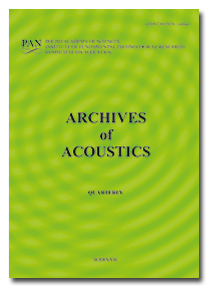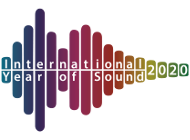10.24425/aoa.2025.153659
Single Vector Hydrophone DOA Estimation: Leveraging Deep Learning with CNN-CBAM
References
Chi J., Li X.,Wang H., Gao D., Gerstoft P. (2019), Sound source ranging using a feed-forward neural network trained with fitting-based early stopping, The Journal of the Acoustical Society of America, 146(3): EL258–EL264, https://doi.org/10.1121/1.5126115.
Choi J., Choo Y., Lee K. (2019), Acoustic classification of surface and underwater vessels in the ocean using supervised machine learning, Sensors, 19(16): 3492, https://doi.org/10.3390/s19163492.
Guo Y., Han J., Wang C. (2018), Multi-acoustic source localization algorithm based on fourth-order moments for single vector hydrophone [in Chinese], Journal of Sichuan University Natural Science Edition, 55: 733.
Liu B., Wang Z., Zhang J., Wu J., Qu G. (2024), DeepSIM: A novel deep learning method for graph similarity computation, Soft Computing, 28: 61–76, https://doi.org/10.1007/00500-023-09288-1.
Liu Y., Chen H., Wang B. (2021), DOA estimation based on CNN for underwater acoustic array, Applied Acoustics, 172: 107594, https://doi.org/10.1016/j.apacoust.2020.107594.
Liang G., Shi Z., Qiu L., Sun S., Lan T. (2021), Sparse Bayesian learning based direction-of-arrival estimation under spatially colored noise using acoustic hydrophone arrays, Journal of Marine Science and Engineering, 9(2): 127, https://doi.org/10.3390/jmse9020127.
Niu H., Ozanich E., Gerstoft P. (2017a), Ship localization in Santa Barbara Channel using machine learning classifiers, The Journal of the Acoustical Society of America, 142(5): EL455–EL460, https://doi.org/10.1121/1.5010064.
Niu H., Reeves E., Gerstoft P. (2017b), Source localization in an ocean waveguide using supervised machine learning, The Journal of the Acoustical Society of America, 142(3): 1176–1188, https://doi.org/10.1121/1.5000165.
Ozanich E., Gerstoft P., Niu H. (2020), A feedforward neural network for direction-of-arrival estimation, The Journal of the Acoustical Society of America, 147(3): 2035–2048, https://doi.org/10.1121/10.0000944.
Tichavsky P., Wong K.T., Zoltowski M.D. (2001), Near-field/far-field azimuth and elevation angle estimation using a single vector hydrophone, IEEE Transactions on Signal Processing, 49(11): 2498–2510, https://doi.org/10.1109/78.960397.
Varanasi V., Gupta H., Hegde R.M. (2020), A deep learning framework for robust DOA estimation using spherical harmonic decomposition, IEEE/ACM Transactions on Audio, Speech, and Language Processing, 28: 1248–1259, https://doi.org/10.1109/TASLP.2020.2984852.
Wajid M., Kumar A., Bahl R. (2020), Direction estimation and tracking of coherent sources using a single acoustic vector sensor, Archives of Acoustics, 45(2): 209–219, https://doi.org/10.24425/aoa.2020.132495.
Wajid M., Kumar A., Bahl R. (2022), Microphonebased acoustic vector sensor for direction finding with bias removal, Archives of Acoustics, 47(2): 151–167, https://doi.org/10.24425/aoa.2022.141646.
Woo S., Park J., Lee J.Y. (2018), CBAM: Convolutional block attention module, [in:] Computer Vision – ECCV 2018, Ferrari V., Hebert M., Sminchisescu C., Weiss Y. [Eds], Cham: Springer, pp. 3–19, https://doi.org/10.1007/978-3-030-01234-2 1.
Xiao P., Liao B., Deligiannis N. (2020), DeepFPC: A deep unfolded network for sparse signal recovery from 1-Bit measurements with application to DOA estimation, Signal Processing, 176: 107699, https://doi.org/10.1016/j.sigpro.2020.107699.
Xu L., Chen L., Li Y., Jiang W. (2022), A block sparse-based dynamic compressed sensing channel estimator for underwater acoustic communication, Journal of Marine Science and Engineering, 10(4): 536, https://doi.org/10.3390/jmse10040536.
Xu L., Ma Y., Yang Z., Gao T. (2019), Tracking of underwater maneuvering target via M-SIMMUKF algorithm, [in:] Proceedings of the 6th International Conference on Information Science and Control Engineering (ICISCE), pp. 630–634, https://doi.org/10.1109/ICISCE48695.2019.00131.
Yao Y., Lei H., He W. (2020), A-CRNN-based method for coherent DOA estimation with unknown source number, Sensors, 20(8): 2296, https://doi.org/10.3390/s20082296.
DOI: 10.24425/aoa.2025.153659






